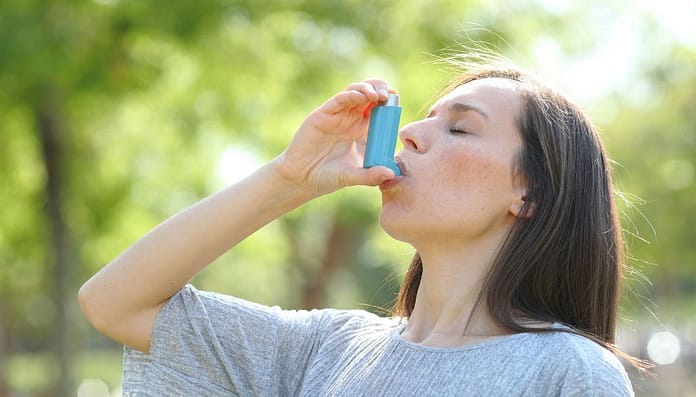Two types of inhalers are usually prescribed to asthmatics:
- Corticosteroid spray: This works as a long-acting medication and must be used regularly to reduce inflammation and thus the cause of symptoms. This makes asthma attacks less common. In this case, corticosteroids act only locally, that is, in the airways. Therefore, side effects affecting the whole body cannot be expected with asthma inhalers.
- Saba spray: It contains an active substance that works to expand the airways. This is an emergency medicine and is only used for the rapid relief of acute symptoms in an emergency situation. The effect usually lasts only a few hours.
A good treatment for asthma is characterized by the fact that SABA spray is as rare as possible.
However, an analysis of UK prescription data found that 26 per cent of asthma patients primarily used SABA inhalers and were prescribed them at least six times a year. The number of prescriptions varied widely among primary care practices: in some cases, 6 percent of asthmatics were prescribed excessively, in others it was as high as 60 percent.
However, the use of a SABA spray instead of a corticosteroid spray is associated with poor asthma control and an increase in severe asthma attacks and hospitalizations. An older study from 2014 showed that overuse of SABA inhalers killed more people with asthma.
Dr Anna de Simone, from Queen Mary University of London, said: ‘There is significant room for improvement – we calculated that a reduction in the number of patients using more than 12 SABA inhalers per year reduced the number of asthma-related hospitalizations in this group by 70 per cent. “
Which: DOI 10.3399 / BJGP.2021.0725

